Discover 10 Tiny black bugs look like poppy seeds and learn effective ways to eliminate them from your home. This comprehensive guide provides valuable insights and practical solutions to help you identify and get rid of these pesky insects.
Have you ever noticed tiny black specks crawling around your home, resembling poppy seeds? These tiny creatures can be a nuisance and cause concern, especially if you’re unsure of their identity or how to deal with them. In this article, we’ll explore 10 common tiny black bugs that look like poppy seeds and provide practical tips on how to get rid of them effectively.
1. Carpet Beetles
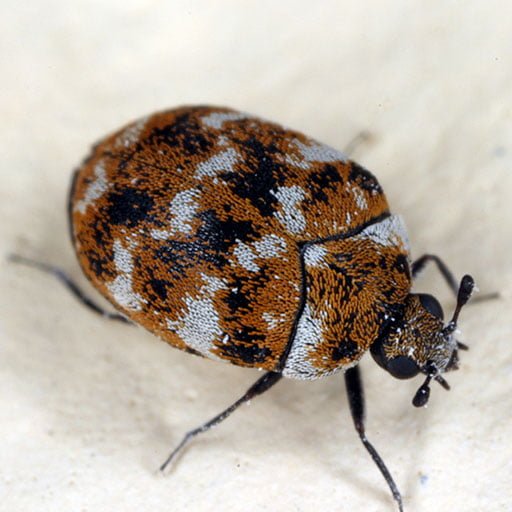
Here’s a short information chart about Carpet Beetles:
| Attribute | Information |
|---|---|
| Name | Carpet Beetle (Family: Dermestidae) |
| Appearance | Small, oval-shaped beetles often with colorful scales |
| Size | Typically 1-4 mm in length |
| Habitat | Found worldwide, commonly in homes |
| Diet | Larvae feed on natural fibers like wool, fur etc. |
| Lifecycle | Complete metamorphosis: egg, larva, pupa, adult |
| Damage | Can damage carpets, clothing, upholstery, and more |
| Control Methods | Regular cleaning, vacuuming, sealing cracks etc. |
| Importance | Pests in homes and museums, but also help in decomposition process |
Carpet beetles are small, oval-shaped insects that feed on natural fibers like wool, silk and fur. They can be found in carpets, upholstered furniture and closets. To get rid of carpet beetles, vacuum thoroughly, use insecticides and consider freezing or heating infested items.
2. Booklice
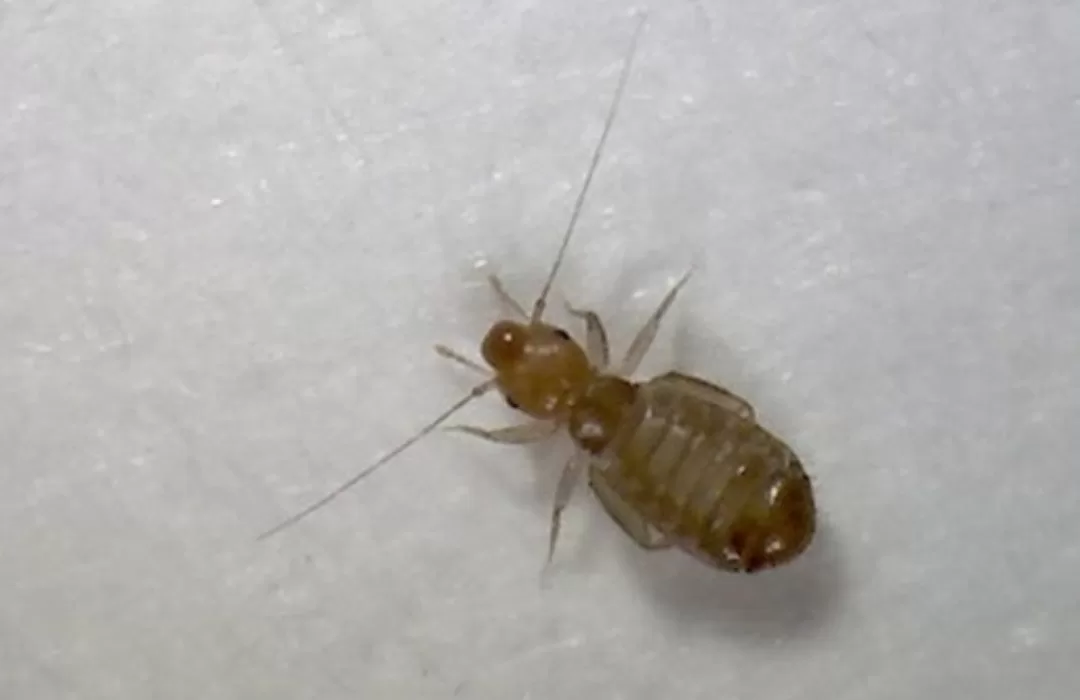
Here’s some information about booklice:
| Attribute | Information |
|---|---|
| Name | Booklice (Order: Psocoptera) |
| Appearance | Tiny, soft-bodied insects, often pale or translucent |
| Size | Typically 1-2 mm in length |
| Habitat | Found in damp, humid environments like libraries, homes and kitchens |
| Diet | Feed on mold, fungi, starches and organic debris |
| Lifecycle | Simple metamorphosis: egg, nymph, adult |
| Damage | Typically considered nuisance pests, can damage paper products if infestation is severe |
| Control Methods | Reduce humidity levels, eliminate mold and fungi, prope |
Despite their name, booklice are not actually lice but tiny insects that feed on mold and fungi found in damp environments. They can infest books, papers and other cellulosic materials. Controlling moisture levels and using insecticides or diatomaceous earth can help eliminate booklice.
3. Spider Beetles
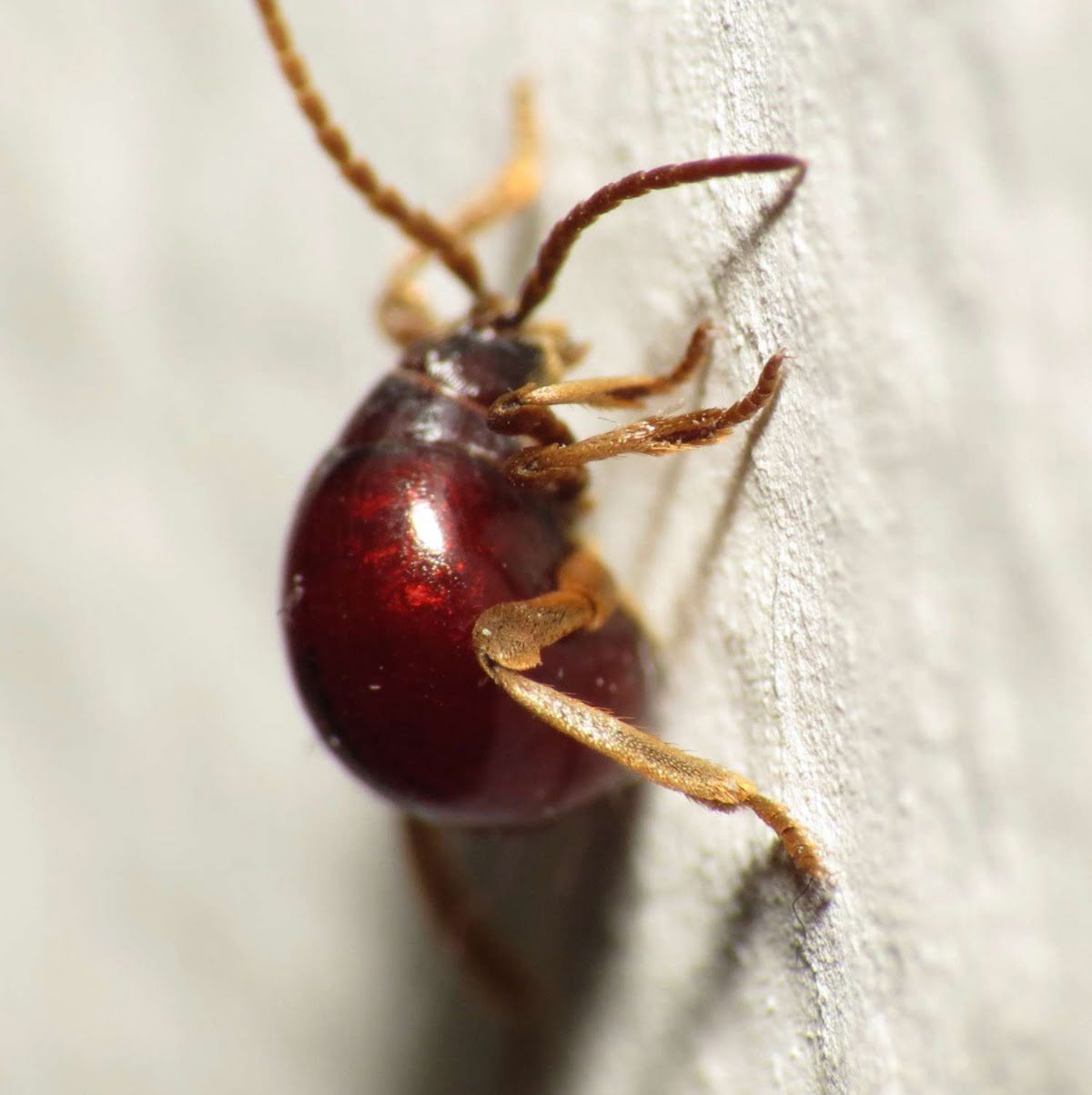
Spider beetles are small, round and black in color. They feed on various materials, including grains, seeds and even books. Keeping your home clean, sealing cracks and crevices and using insecticides can help get rid of spider beetles.
4. Grain Weevils
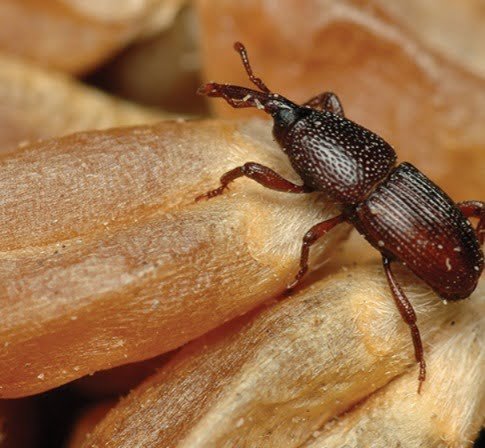
Here’s some information about grain weevils:
| Attribute | Information |
|---|---|
| Name | Grain Weevils (Family: Curculionidae, Subfamily: Sitophilus) |
| Appearance | Small, dark brown beetles with elongated snouts |
| Size | Typically 2-4 mm in length |
| Habitat | Found worldwide, commonly in stored grains, cereals, rice, seeds and other food products |
| Diet | Primarily feed on whole grains, seeds and cereals |
| Lifecycle | Complete metamorphosis: egg, larva, pupa, adult |
| Damage | Infest and damage stored grains and cereals, leaving behind holes and flour-like residues |
| Control Methods | Proper food storage in airtight containers, freezing infested products, heat treatment, fumigation and professional pest control |
Grain weevils are small, brown or black beetles that infest stored grains, cereals and flour. To eliminate them, discard infested food, clean pantry areas thoroughly and consider using airtight containers for food storage.
5. Fleas
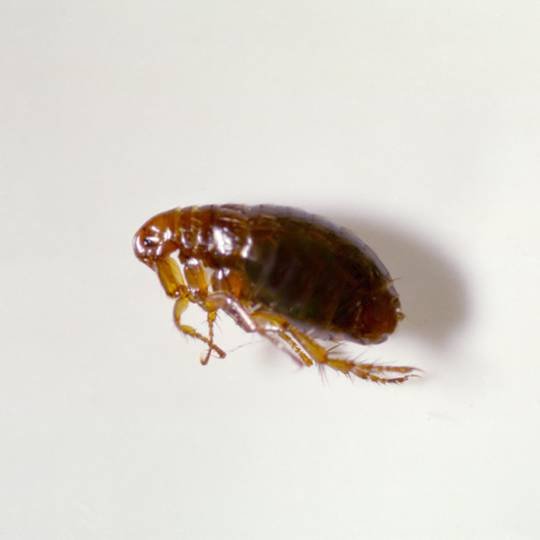
Here’s some information about fleas:
| Attribute | Information |
|---|---|
| Name | Fleas (Order: Siphonaptera) |
| Appearance | Small, wingless insects with flattened bodies |
| Size | Typically 1-4 mm in length |
| Habitat | Found worldwide, commonly infesting mammals such as dogs, cats, rodents and occasionally humans |
| Diet | Blood-feeding parasites, primarily feeding on the blood of their hosts |
| Lifecycle | Complete metamorphosis: egg, larva, pupa, adult |
| Damage | Can cause discomfort, itching, and allergic reactions in humans and animals; can transmit diseases such as plague and typhus |
| Control Methods | Regular vacuuming, pet grooming, flea treatments for pets, insecticides and professional pest control |
While fleas are more commonly associated with pets, they can also infest homes and bite humans. Vacuuming regularly, treating pets with flea control products, and using insecticides may be necessary to get rid of fleas.
6. Drugstore Beetles
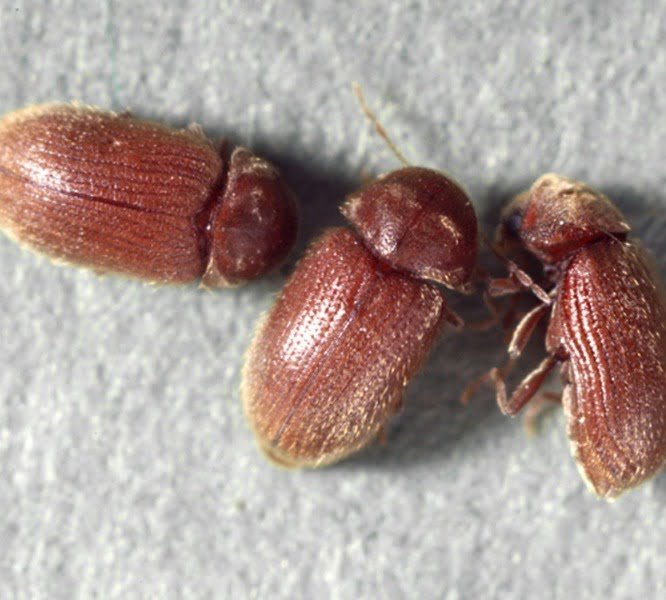
Here’s some information about drugstore beetles:
| Attribute | Information |
|---|---|
| Name | Drugstore Beetles (Scientific name: Stegobium paniceum) |
| Appearance | Small, reddish-brown beetles with elongated bodies |
| Size | Typically 2-3 mm in length |
| Habitat | Found worldwide, commonly infesting stored food products, spices, drugs and other dried organic materials |
| Diet | Feed on a wide range of dried organic materials, including grains, spices, drugs and dried plant matter |
| Lifecycle | Complete metamorphosis: egg, larva, pupa, adult |
| Damage | Can infest and damage stored food products and dried goods, leading to contamination and spoilage |
| Control Methods | Proper storage in airtight containers, sanitation, removal of infested products, insecticides and professional pest control |
Drugstore beetles are small, brown or black insects that can infest a variety of dried goods, including spices, grains and even prescription drugs. Proper storage, cleaning and insecticide application can help control these pests.
7. Larder Beetles
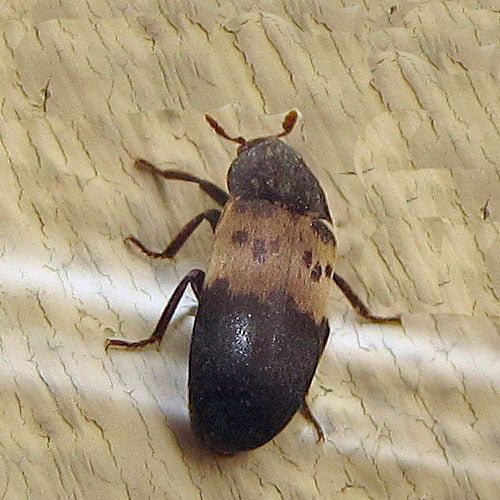
Here’s some information about larder beetles:
| Attribute | Information |
|---|---|
| Name | Larder Beetles (Scientific name: Dermestes lardarius) |
| Appearance | Medium-sized beetles with elongated bodies and distinctive yellowish-orange bands on the wings |
| Size | Typically 6-9 mm in length |
| Habitat | Found worldwide, commonly infesting stored food products, especially meat, cheese and dried animal products |
| Diet | Opportunistic feeders, consuming a wide range of organic materials, including meat, cheese, dried insects, feathers and more |
| Lifecycle | Complete metamorphosis: egg, larva, pupa, adult |
| Damage | Can infest and damage stored food products, leading to contamination and spoilage; larvae can also damage museum specimens and animal hides |
| Control Methods | Proper storage in airtight containers, sanitation, removal of infested products, insecticides and professional pest control |
Larder beetles are small, oval-shaped insects that feed on cured meats, cheese and other protein-rich foods. Keeping food properly stored, maintaining cleanliness and using insecticides can help eliminate larder beetles.
8. Psocids (Booklice)
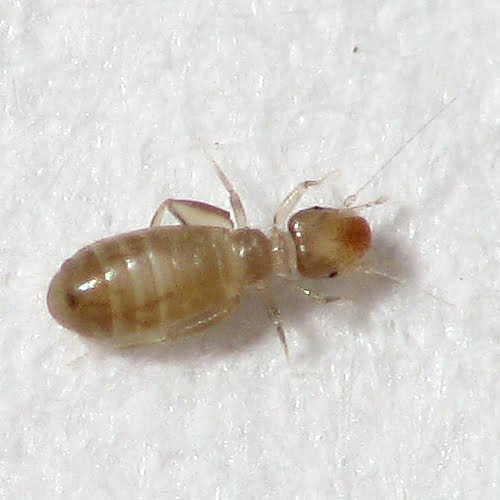
Here’s some information about psocids, commonly known as booklice:
| Attribute | Information |
|---|---|
| Name | Psocids (commonly known as booklice) |
| Appearance | Tiny, soft-bodied insects, often pale or translucent |
| Size | Typically 1-2 mm in length |
| Habitat | Found in damp, humid environments like libraries, homes and kitchens |
| Diet | Feed on mold, fungi, starches and organic debris |
| Lifecycle | Simple metamorphosis: egg, nymph, adult |
| Damage | Typically considered nuisance pests, can damage paper products if infestation is severe |
| Control Methods | Reduce humidity levels, eliminate mold and fungi, proper storage of paper products, insecticides if necessary |
Psocids, also known as booklice, are tiny, pale or grayish insects that feed on mold and fungi found in damp environments. Controlling moisture levels, improving ventilation and using insecticides can help get rid of psocids.
9. Cigarette Beetles
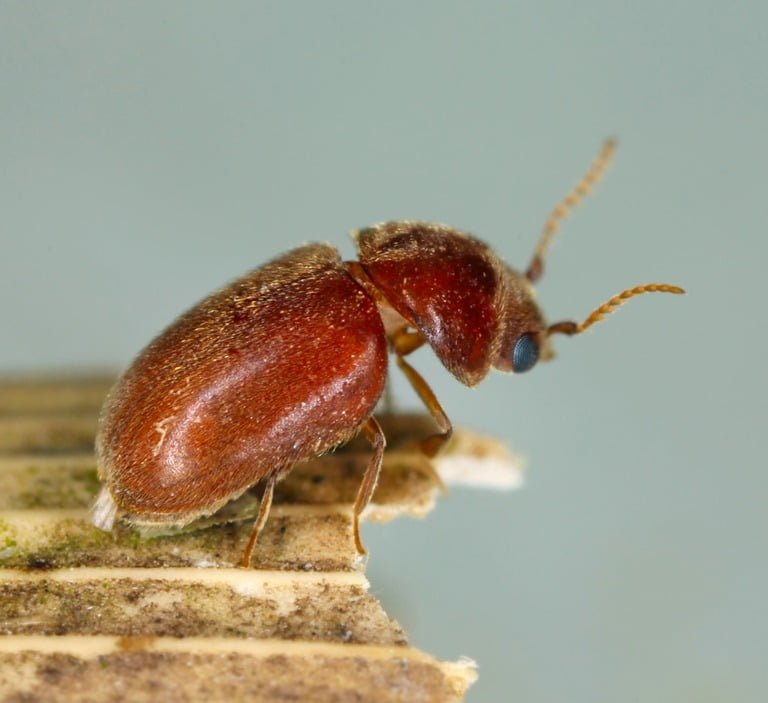
Here’s some information about cigarette beetles:
| Attribute | Information |
|---|---|
| Name | Cigarette Beetles (Scientific name: Lasioderma serricorne) |
| Appearance | Small, reddish-brown beetles with oval-shaped bodies |
| Size | Typically 2-3 mm in length |
| Habitat | Found worldwide, commonly infesting stored tobacco products, dried herbs, spices, grains and other dried plant materials |
| Diet | Primarily feed on dried plant materials, including tobacco, herbs, spices, grains and dried flowers |
| Lifecycle | Complete metamorphosis: egg, larva, pupa, adult |
| Damage | Can infest and damage stored tobacco products and dried plant materials, leading to contamination and spoilage |
| Control Methods | Proper storage in airtight containers, sanitation, removal of infested products, insecticides and professional pest control |
Cigarette beetles are small, oval-shaped insects that can infest a variety of dried goods, including grains, spices and even tobacco products. Proper storage, cleaning and insecticide application are effective methods for controlling these pests.
10. Flour Mites
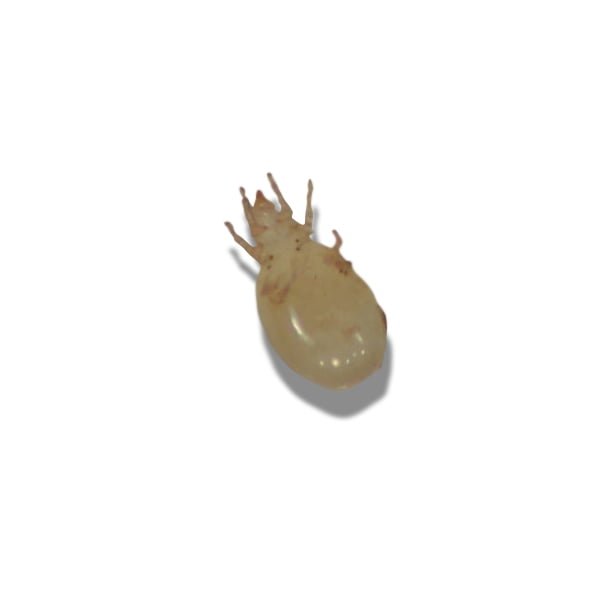
Here’s some information about flour mites:
| Attribute | Information |
|---|---|
| Name | Flour Mites (Scientific name: Acarus siro) |
| Appearance | Tiny, white or translucent mites, barely visible to the naked eye |
| Size | Typically less than 1 mm in length |
| Habitat | Found worldwide, commonly infesting stored grains, flour, cereals and other food products |
| Diet | Feed on starchy materials such as grains, flour and cereals |
| Lifecycle | Simple metamorphosis: egg, nymph, adult |
| Damage | Can infest and contaminate stored food products, leading to spoilage and rendering them unfit for consumption |
| Control Methods | Proper storage in airtight containers, freezing infested products, heat treatment, sanitation and professional pest control |
Flour mites are tiny, white or pale-colored mites that infest flour, grains,and other dried foods. Discarding infested products, cleaning thoroughly and using airtight containers can help eliminate flour mites.
Getting Rid of Tiny Black Bugs
While the specific methods for getting rid of tiny black bugs may vary depending on the insect species, here are some general tips that can be effective:
- Identify the pest: Proper identification is crucial to determine the most effective control methods.
- Clean and declutter: Remove food sources, clean thoroughly and vacuum regularly to eliminate potential breeding grounds.
- Use insecticides: Consider using insecticides approved for indoor use, following label instructions carefully.
- Improve ventilation: Proper ventilation can help reduce moisture levels, which many of these pests thrive on.
- Seal entry points: Caulk cracks and crevices to prevent pests from entering your home.
- Store food properly: Use airtight containers and discard infested food products.
- Consider professional help: If the infestation is severe or persists, seek assistance from a professional pest control service.
Remember, prevention is key. Maintaining a clean and well-maintained living environment can go a long way in deterring tiny black bugs and ensuring a pest-free home.